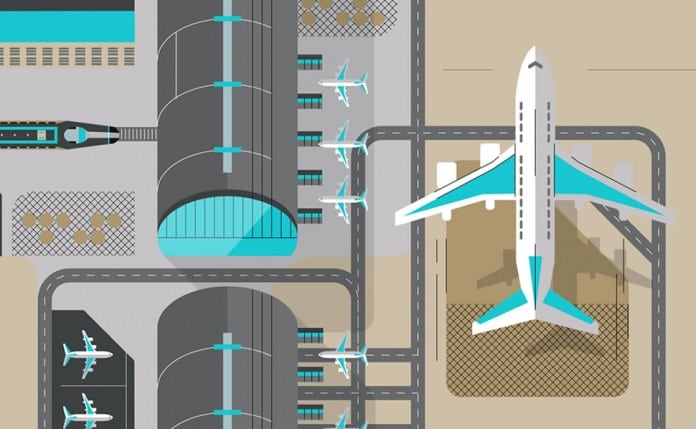
Over the past 15 years, Dubai has become a city of superlatives – the tallest building, the largest shopping mall, and the biggest man made island spring to mind. More recently though, the emirate added another to the list: the busiest international airport. In 2014, Dubai International overtook London Heathrow to become the world’s air travel hub, handling more than 70 million passengers – compared to the latter’s 68.1 million.
Much like the office buildings in close proximity to London Heathrow, good quality floor space near Dubai International Airport is in short supply – driven by strengthening tenant demand in recent years. Thus in response to increasing enquiries for space from both new and existing occupiers, authorities at Dubai Airport Freezone (an ‘offshore’ location adjacent to the airport, where a number of multinational firms are already based) have been building new facilities.
With the number of passengers passing through Dubai International expected to hit 100 million by 2020, and scope for expanding the existing site limited, officials have turned to Dubai’s second airport: Al Maktoum International.
Its planned expansion is among the largest projects in the region and is anticipated to be fully complete in around ten years. Also, the airport is located in Dubai South – an area almost twice the size of the island of Hong Kong.
While full completion is still some way off, the airport is already conducting general passenger and cargo operations, with Emirates SkyCargo, for example, currently running air freight out of Dubai South. Eleven office buildings of around 3.3 m sq ft at Dubai South’s business park are complete and ready for occupation, but with the airport still in the early stages of development, occupancy rates are understandably low. Nevertheless, the park is already drawing in major names as tenants.
So what does the future hold for the purpose built aerotropolis? Also, why are companies gravitating towards it?






















![The Square at Nad Al Sheba Gardens Now Open hope tax season treated you well! Just checking in—ready to refocus on growing your business? I remember how we discussed scaling your [specific aspect of their business, e.g., online presence] but paused due to time constraints. We now offer a streamlined 6-month plan that delivers real results without adding to your workload. Let me know if you'd like to chat—I’d love to help you pick up where we left off!](https://www.dubaichronicle.com/wp-content/uploads/2024/11/The-Square-5-218x150.jpg)









